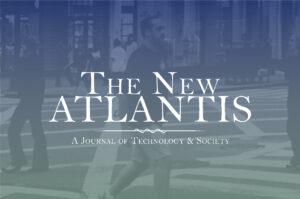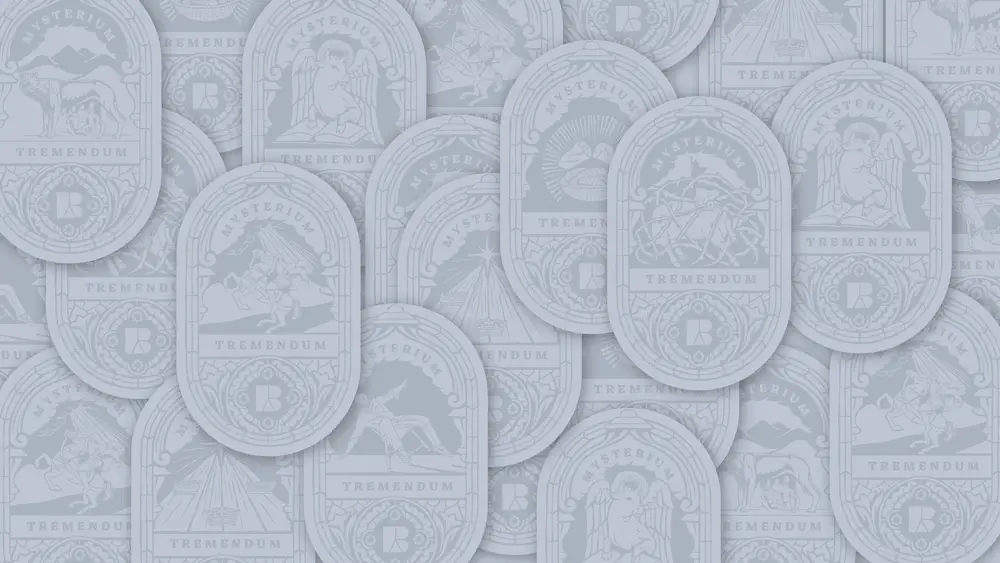
Culture War as Imitation Game
The French social theorist René Girard, born in 1923, is not quite yet a household name, but his work does

Nearly everyone (unconsciously) assumes there’s a straight line between them and the things they want.
>> I wake up one day and “suddenly” decide that I want to run a marathon—amazingly, all of my friends had a similar realization when they hit their mid-thirties, too.
>>I get the brilliant idea that Substack is objectively the best publishing platform for my long-form essay writing, based on all the “data”—right around the time that everyone else and their mother seems to be arriving at the same conclusion.
>> I decide to get a dog during Covid because, well, I’ve been wanting a dog for a long time and now seems like as good a time as ever. (Nevermind that I’m the only one in my friend group who hasn’t, yet, and these guys share pictures of their puppies on Instagram along with the rest of the world on nearly a daily basis.)
In each of these cases, I’ve convinced myself that my desire is independent and autonomous. I want to pursue something because it “just makes sense,” or it’s the right thing to do, or it’s what I “authentically” want or need to be happy.
(This all happens beneath my conscious awareness. Very few people question why they want the things they want at all.)
This assumption that my desires are all my own—this story that I tell myself—is what the French social scientist René Girard calls “The Romantic Lie.” The Lie is that I want things independently, or that I choose all of the objects of my desire out of some kind of secret desire chamber in my heart— that I know a good thing when I see it; that I know what’s desirable and what’s not, unaided.

All illustrations by Liana Finck.
Julius Caesar was an excellent Romantic liar. When he won the battle of Zela, he famously declared: “Veni, vidi, vici” (I came, I saw, I conquered). If we translate these words into the language of desire, we see what he is really claiming: “I came, I desired, I conquered.”
Caesar would like all of us to believe he needs only to lay eyes on something to know whether it’s worth wanting. But Caesar is lying. He’s like the rest of us. The desirability of the particular land on which the battle of Zela was fought had nothing to do with the land itself and everything to do with the value that his rival, the Persian king Pharnaces II, had put on it—simply by being there.1
The value of objects is not objective—it’s subjective. And that subjective value is determined mimetically, based on our relationships with others. We could say that value is intersubjective: we assign value to things (and therefore desire them) according to what other people want.
Models of desire—those people who we look to for guidance about what to want (usually without knowing it)—literally transfigure objects before our eyes. Say you walk into a consignment store with a friend and see racks filled with hundreds of shirts. Nothing jumps out at you. But the moment your friend becomes enamored with one specific shirt, it’s no longer a shirt on a rack. It’s now the shirt that your friend Molly chose—the Molly who, by the way, is an assistant costume designer on the sets of major films. The moment she starts ogling one shirt, she sets it apart. It’s a different shirt than it was five seconds ago, before she started wanting it.
And it doesn’t have to be a shirt. It can be anything.

The path between us and the thing we want is never straight. It’s always curved. It goes through, or around, models.
Models are people, groups, or things that help us know what to want.
“O hell! to choose love by another’s eyes!” says Hermia in Shakespeare’s A Midsummer Night’s Dream. It’s hell to know we have chosen anything by another’s eyes. But we do it all the time: we choose brands, schools, and dishes at a restaurant by them.

The art of Phillip Guston.
Humans have a built-in, instinctual radar for our most basic needs—just like animals do. If we’re trapped outside in the cold freezing, we instinctively seek shelter in the warmth.
Basic survival, sustenance, sex, warmth: these are all instinctual needs for which we have biological mechanisms to help guide us. If I’m starving and I see a juicy steak and a piece of wood in front of me, I don’t need much help to determine which one I should eat. My body tells me what to choose.
These things are not desires per se. It’s more appropriate to call them “needs.”
A desire, on the other hand, is an object that we pursue for which there is no purely instinctual basis. When it comes to desire, we don’t have a built-in mechanism (like instincts) to help guide us toward wanting one thing more than another. Which new model of car should we buy? What should we major in at college? What style of clothes should we wear? The more abstract the thing is, the more mimetic desire usually comes into play. Our central nervous system certainly isn’t going to give us any clear or intelligible answers.
But models can. Models are people who show us what is worth wanting.
Rather than an internal (biological) homing device that helps us make choices, models are external signposts that steer us toward the pursuit of certain people, places, things, even lifestyles.
Models are like people who seem farther up ahead on the path we’re on; they can see around a corner that we can’t see around. We assume that they have some insight into which direction to go that we do not. In short, we assume they have something that we do not—that they possess some quality of being that we do not. And so we follow them.
Mimetic desire means that we make many of our choices according to the desires of others—our models.
If we choose something that nobody else seems to want, we begin to doubt that we made the right choice. If a high school student starts dating a classmate that none of her friends express even the slightest bit of interest in, she grows insecure. She begins to wonder whether she made the right choice. We seek validation in our desires. We look for social proof.
Desire always needs something to latch onto; it can’t stay free-floating. In this sense, it operates like a bicuspid that has to be attached to a substrate (a rock, or some other surface). As soon as it becomes detached from one thing, it immediately attaches itself to something else: another model.
There is no end to desire because there are always more models. The overnight Bitcoin millionaire doesn’t start wanting less, or even simpler things; he starts taking an interest in rare fish aquariums, Nordic cooking, and traveling to obscure places he reads about in his Monocle magazines.
Desire, according to René Girard, is always for something we think we lack—or else it wouldn’t be desire at all. Desire is not object-oriented, as we commonly assume. Desire never finds fulfillment in any particular “thing.” There is literally no object or achievement or person that would ever satiate our desire. If anything, we dream up new and strange things to want the more that we have.
Desire is unique to humans in this sense. Animals don’t have abilities of abstraction, which means they can’t want things beyond their immediate worlds. Humans, on the other hand, have learned to want the most obscure and trivial things. And our mimetic nature has made us a target of manipulation by those who understand how this mechanism works.

This continuum is an oversimplification. In reality, the lines are blurry. Our most basic needs are also driven largely by mimesis.
Even water has transitioned from the world of needs to the world of desires. Imagine you came here from another planet that was still in the pre-bottled-water stage of evolution (a critical stage). I asked you whether you preferred Aquafina, Voss, or San Pellegrino. Which would you choose?
Sure, I could present you with the minerality breakdown and pH levels of each, but we’d be kidding ourselves if we think that’s how you will make your choice. I tell you I drink San Pellegrino. And if you’re an imitative creature like me, or if you just think I’m a more highly developed being than you—because you come from a pre-Pellegrino people—you’re going to choose San Pellegrino.
It’s revealing to think of mimetic desire along a continuum. Certain people and organizational cultures are more prone to mimesis than others. And one thing is clear, on a societal level: any society in which people are no longer struggling with scarcity but coping with abundance will undergo an explosion of mimetic desire.

In this universe of desire that we find ourselves in, there is no stable hierarchy. Since desires are determined by models and not by instincts, we can begin to want something new at any given time if the right model comes along. The sociologist and philosopher Zygmunt Bauman referred to this kind of situation as “liquid modernity”—almost nothing is stable. Not least of all our desires.
None of this is to say that our evaluation of people and things is merely subjective. It is (hopefully) formed in part by the objective qualities of the thing itself. A baby banging on pots and pans, a high school punk band, and Mozart have different levels of musicality. Beauty is objective, but we perceive it subjectively—that is, mimetically. We perceive it through the lens of models who distort reality. The more we want to be like a model, the more we lose sight of the objective qualities of the things they have.
The things themselves don’t matter much when it comes to desire. We care about people (models), not things. They represent some quality of being that we think we lack.
This is what Girard calls metaphysical desire: desire of another’s desire—not of any particular object. One way to think about the word metaphysical is “after the physical.” Metaphysical desire is not concerned with physical things. It is concerned with being a certain way. It is concerned with identity.

A chef who lusts for the elusive Michelin Guide stars does not want the silly red star that appears next to the name of his restaurant (like a blue verified mark on Twitter…)—he wants the prestige that comes with it. The credentials of universities, having bylines in certain publications, getting named to certain “lists”, or simply just being thought of as an “expert” by others are all forms of this mimetically-driven sense of identity.
I’ll re-iterate in slightly different terms: a model is someone, real or fictional, who mediates desire to us. We already call people who mediate desire for certain clothes or styles by their true name: “models.” Their purpose is not to model the physical articles of clothing but the desire to wear the clothes. Their purpose is to make us want what they have.
What you actually want is their face, their body, their withering stare—which don’t come with the clothes.
There are two major types of models with whom we have different kinds of relationships. Mimetic desire works differently in each of the two situations.
If the model stands at a great distance—not physically, but socially and existentially—then the model is an external mediator of desire. The model is external to the subject’s world. This means that no serious competition with the model is possible.
I like to call the world in which these types of models live Celebristan for short.

There is a barrier between the models in Celebristan and the people who take them as models. That barrier can be death, or time, or space, or simply status.
While everybody likes a feel-good story of a movie star or singer taking a high schooler to the prom, we all know that the high schooler isn’t on a real date—he or she has no chance of competing with the movie star’s real suitors. They live in Celebristan.
Don’t get me wrong. I don’t mean that a person literally has to be a celebrity to exist in this world. I am referring to situations where a person is simply an external mediator of desire—their desires cannot be directly challenged by their imitator because they seem to occupy a different plane of existence. Even the growing gap between rich and poor in the United States can put neighbors in the awkward situation of one person living in Celebristan while the other does not. (And that’s a recipe for resentment—and more.)
In the greatest novel ever written—Cervantes’ Don Quixote—the protagonist Don Quixote has his desire inflamed to be a knight (more specifically: a “knight errant”) merely by reading about the adventures of the famous knight Amadís de Gaula. The chivalrous knight, Amadís, was completely external to Don Quixote’s world. He existed in Celebristan.
Don Quixote sets out on his crazy adventure with his trusty sidekick, Sancho Panza. But even though they are side-by-side through much of the book, Don Quixote is still an external mediator of desire for Sancho Panza. They are separated by social class and their sense of identity. At no point in the novel does Sancho believe he is a serious competitor to Don Quixote—he doesn’t even dream about wanting or achieving the same things that Don Quixote does—even though they occupy the same physical space and time.
We all have people who are in Celebristan from our perspective. A Managing Director at an investment bank lives in Celebristan to an Analyst (an entry-level position); NBA players do to college players (college athletes can’t compete for the same championship and trophy); even a much older brother can seem to be in Celebristan to his younger brother. At least until they both make it through adolescence and the older brother doesn’t seem more like a man than a peer in the younger boy’s eyes.
It’s worth asking ourselves, honestly: Who in my life do I look at as if they live in Celebristan?
The other kind of model is an internal mediator of desire—one who mediates desire from inside the subject’s world. I like to call this world Freshmanistan for short.
Remember what it’s like to be a freshman in high school or college? Despite the “great differences” between the jocks and the nerds and the Thespians, they’re all far more alike than they are different: they sit next to one another in the same classes, they’re all roughly the same age, and they’re all vying to carve out an adult identity. None of them have that much power or money (I’m not counting mommy and daddy’s). They’re all, so to speak, in the same boat—as much as they try to deny it.
Most importantly, there is no barrier separating them from one another. They are in a situation where competition over anything and everything is possible.

[Note: a model’s location in either Celebristan or Freshmanistan is always relative to the other person. The rapper Kanye West is in Celebristan to me—but he’s not to Jay-Z. The two of them exist in Freshmanistan together because they have a relationship in which real competition is possible.]
If you lived in 1954 and had 100 students in your class, that would be your Freshmenistan. In 2021, if you’re in a class with 100 students, your Freshmenistan is those 100 kids plus every other freshman you follow on Instagram, TikTok, and Snapchat. That’s a lot of modeling, comparing, and desire-shifting.
In Freshmanistan, things can get messy very fast. And all social media is Freshmanistan—we are surrounded by models of desire at all times.

In a way, we’re all Freshmen again. Freshmanistan is characterized by a dangerous level of sameness, which leads to a crisis of undifferentiation—even as everyone is imitating their secret models, whom they profess to love (but secretly hate), they are desperately trying to carve out their own identities on a tiny raft, in the middle of stormy waters that threaten to swallow them up in a sea of sameness.
Go ahead, differentiate yourself. You have 180 characters.
Stay tuned and sign-up for the Anti-Mimetic newsletter to make sure you don’t miss the next installment in this Mimetic Desire 101 series.
1 The example of Julius Caesar as an excellent Romantic Liar is inspired by work of James Warren, who includes this ancedote in his excellent book, Compassion or Apocalypse: A Comprehensible Guide to the Thought of René Girard.

The French social theorist René Girard, born in 1923, is not quite yet a household name, but his work does

With school-choice initiatives proliferating, students struggling to make up for lost Covid time, and Americans pessimistic about the direction of

From career choices to new purchases, use René Girard’s mimetic theory to resist the herd and forge your own path

What does Athens have to do with Jerusalem—and what do either have to do with Silicon Valley? NASA can land a

I reached out to Liana Finck during the early, dark days of the pandemic in April 2020. My fiancé, Claire,
All rights reserved Luke Burgis / Fourth Wall Ventures, LLC 2019-2024 ©







Please note that due to the number of emails that we receive, we cannot respond to every one.